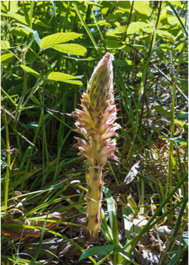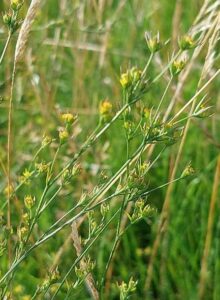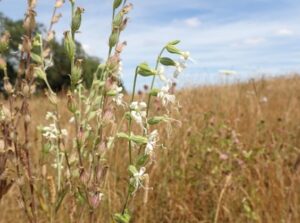2023 County Report for Worcestershire
Cesca Beamish, John Day, Tom Ward
During our second year, the North Worcestershire Flora Group made 1095 records of 472 unique taxa across nine sites ranging from acid grassland SSSIs to urban streets in autumn. This included 44 Axiophytes and 27 listed on the Vascular Plant Red List for England.
We have built a strong association with the local Wildlife Trust and this winter will be encompassing their botanical study group.
A county first record was created following the determination of Brachypodium rupestre (Tor-grass) frequent on Windmill Hill SSSI, with Ononis spinosa (Spiny Restharrow) and Astragalus glycyphyllos (Wild Liquorice).



